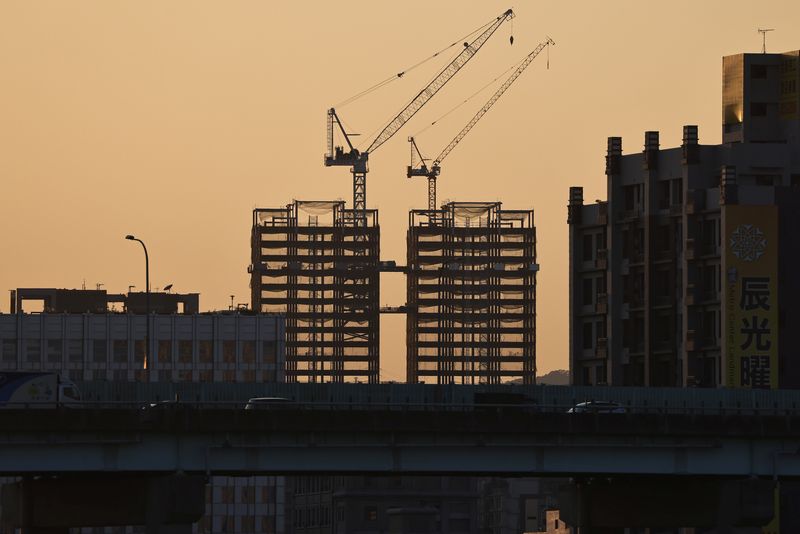TAIPEI (Reuters) – Taiwan’s trade-dependent economy grew more than expected in the second quarter thanks to stronger demand for new technology, such as artificial intelligence (AI).
Taiwan is a key hub in the global technology supply chain for companies such as Apple (NASDAQ:AAPL) and Nvidia (NASDAQ:NVDA), and home to the world’s largest contract chipmaker, Taiwan Semiconductor Manufacturing Co Ltd (TSMC).
Gross domestic product grew by a preliminary 5.09% in the April-June period from a year earlier, the statistics agency said on Wednesday, beating the 4.8% growth forecast by analysts in a Reuters poll, but slower than the 6.56% expansion in the first quarter.
“All indexes monitoring investments were better in Q2 than Q1…there’s been a notably significant rise in demand for machinery equipment,” official Tsui-hua Wang of the Directorate-General of Budget, Accounting and Statistics told reporters.
And some analysts were optimistic about full-year predictions.
“Q2 GDP exceeds market forecasts. Analysts have raised full-year forecasts to 3.5% – 4%, or even above 4%, due to solid performance of exports and investments recently,” said analyst Jeng-yu Liu of First Capital Management.
Analysts see limited chances for Taiwan’s central bank to hike interest rates at its next quarterly rate-setting meeting in September.
Quarter-on-quarter, the economy grew at a seasonally adjusted annualised rate of 0.13%.
Shipments from the technology sector, boosted by global demand for AI-related products, will likely help the economic momentum.

Second-quarter exports rose 9.9% versus the same period in 2023, compared with the first quarter’s annual expansion of 12.9%.
The economy in China, Taiwan’s largest export market, grew much more slowly than expected in the second quarter, expanding 4.7%, its slowest since the first quarter of 2023 and missing a 5.1% analyst forecast in a Reuters poll.
To read the full article, Click Here

